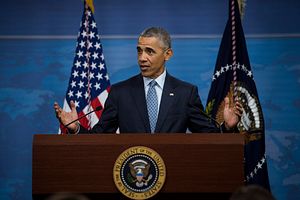Is it worth our time and trouble to try to construct an international “rules based order?” A previous article discussed multilateral maritime exercises in context of how they could build organizational skills, but also how they contributed to developing a set of rules for international maritime management. But what is a rules-based order, and how does it matter?
At a minimum, we would expect the rules based order to coordinate action against the kinds of common enemies (pirates, terrorists, and natural disasters) that John Bradford and his co-authors identify. The rules based order offers both positive and negative rules. On the positive side, it establishes the form and content of response (common procedures for dealing with pirates, emergency response measures for natural disasters, and so forth).
On the negative side, it cautions states against taking advantage of cooperative struggles for individual gain. For example, the United States and others have worked very hard to sever the tie between terrorist groups and their state sponsors. Similarly, the international community would look very grimly on an effort by Japan to take advantage of an earthquake in China.
But generally speaking, the idea of a rules based order goes beyond these minimal injunctions, and tries to describe appropriate rules of state behavior. This includes appropriate forms of competition; prohibitions that states will face censure if they break. Such orders are invariably value-laden, reflecting the interests and nature of the states that establish them. And it is in these more complex versions that the most interesting debates over the existence of mutually-agreed orders happen.
This feels abstract, but it has very real implications for how China, the United States, and others develop policy in the South China Sea. The United States has defined its interests in the Western Pacific primarily in positive sum, multilateral terms, a formulation which has attracted many of the nations of the Pacific Rim, particularly those in Southeast Asia.
This formulation gives content to U.S. opposition to such developments as the Chinese militarization of Scarborough Shoal. Similarly, Freedom of Navigation Operations, or FONOPs, (with all of their variance and complexity) only have meaning within a reasonably well-established set of rules that govern the obligations of warships, and the rights of littoral states.
Indeed, the United States would struggle to put together a compelling account of its commitment to the status quo in the South China Sea without framing it in terms of a defense of the rules based order. If there’s no “rules based order,” then there’s no reason to worry about violations of that order. And if we’re not worried about violations to the rules based order, then it’s hard to explain to anyone, foreign or domestic, what the United States is doing in the South China Sea.
And so we could answer the question “is it worthwhile to try to build a rules based order?” in the negative. But if we do, it unsettles how the United States has made policy in the Western Pacific for the last two decades, and places us on an uncertain course. That’s fine; we should ask unsettling questions. But we should also have some sense of what’s at stake in the answers.

































